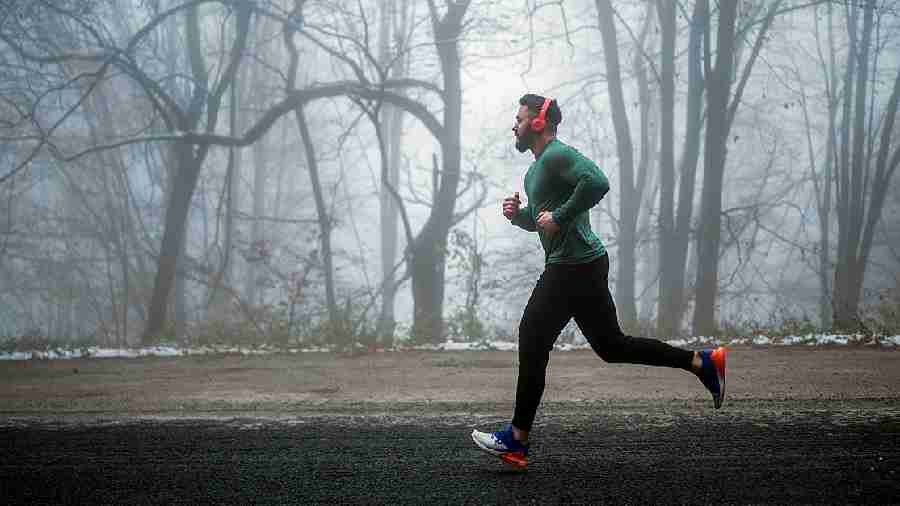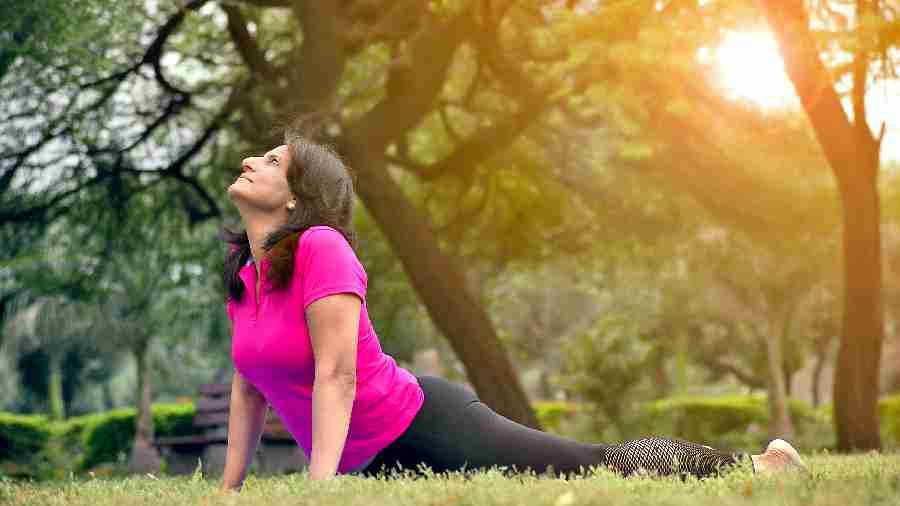Sports have always been a big part of Ciarán Friel’s life. Before he became an exercise physiologist at the Feinstein Institutes for Medical Research in New York City, he was a physical education teacher and a Gaelic football coach. He has always been active. But now that he has a desk job, he said, it’s hard to find time to work out.
Like many, “I have faced the same challenges of getting up in the morning or finding time to exercise,” Dr Friel said.
It’s not clear when the ideal time of day to exercise is. Studies have suggested that the weight loss benefits are highest in the morning, but improvements in blood sugar and cholesterol may be best in the afternoon. Realistically, it’s most effective whenever you can do it consistently.
Despite the challenge of waking up early enough for a workout, Dr Friel said, mornings are better for most people because they have more control over their time before the commitments of the day kick in. You’re usually not being asked to work or do errands at 7am, he said. Friends rarely invite you to happy hour at 6 o’clock in the morning.
“Life happens,” said Shawn Youngstedt, an exercise psychologist at Arizona State University. He added that for many people, “if they don’t exercise in the morning, they aren’t going to be able to.”
It’s not easy, however, to simply jump out of bed in the morning and start running, swimming or lifting weights. If you’re looking to build a sustainable morning exercise routine, here’s what experts say can help.
Prepare to start getting up earlier.
Almost every cell in the body functions on a daily rhythm that lasts approximately 24 hours. This cycle determines not just when we fall asleep and wake up, but also our body temperature, our hunger pangs, our hormones and more.
To wake up earlier and start a morning exercise routine, “what we’re trying to do is not just shift your bedtime, but actually shift your entire circadian clock to be earlier”, said Kimberly Fenn, a cognitive neuroscientist who studies sleep and learning at Michigan State University. “That’s the ultimate goal.”
In the morning, we get a flood of the hormone cortisol, which is thought to help wake us up, among other things, Dr Fenn said. But if you suddenly switch your alarm clock from 8am to 6am, your cortisol levels won’t be high enough when it rings and you may struggle more than usual to get out of bed. Instead, she recommended gradually going to sleep at an earlier time.
“If your goal was to start training on Saturday,” she said, “maybe on Tuesday, instead of going to bed at midnight, you go to bed at 11.45. Then on Wednesday, at 11.30.”
There are also things you can do during the day to shift your circadian rhythm. In one study, Dr Youngstedt and his team instructed 101 adults to do an hour of moderate exercise at eight different times for three days. As expected, those who hit the treadmills in the morning shifted their circadian cycles forward, meaning their bodies were ready to sleep and wake up earlier.
But they weren’t alone. The participants who exercised at 1pm and 4pm saw similar shifts, suggesting that even exercising in the afternoon might make waking up earlier the next day just a little easier. If you can fit it in your schedule, consider working out in the early afternoon for a few days before making the full jump to a morning sweat session.

Avoid performance-based goals when you’re first starting out. If you’re running, don’t worry about speed or distance. Instead, just try to get in the habit of jogging for 30 or 40 minutes in the morning
SHINE A LITTLE LIGHT
In the summer, your best bet for feeling energised might be to step into the morning sunshine right away, but in the winter, you will probably be rising before the sun. In that case, you’ll need some bright artificial light to wake your body up. Bright light tells your body to stop making melatonin, a hormone that makes you sleepy.
“Having access to bright light in the morning is the best way to help train your circadian cycle,” said Dr Fenn, who has spent many dark mornings running on New York streets training for marathons. “Intensity does matter,” she said. Your soft bedroom lighting is unlikely to do the trick. Most studies suggest that 10,000 lux — which a good light therapy lamp can deliver — is enough to help shift your circadian rhythm. Some suggest it can go as low as 2,000, however, which is about the same as two 100W bulbs.
Dr Fenn is working on a study to test the effects of light therapy using glasses that shoot light directly into participants’ eyes as they go about their morning routines. There’s limited data on these specific glasses, but she believes they may have the same effect as other forms of light therapy.
WORK BACKWARD. MAKE YOUR PLAN
First, you need to figure out how exercise will fit into your mornings. Think about your morning deadline, or the time of your earliest immovable obligation, such as driving your kids to school or arriving at the office, and work backward.
Avoid distractions that can slow you down, like checking your email right when you wake up. Try laying your exercise clothes out the night before to save time.
Once you identify your morning deadline, you can consider your preference. For example, Dr Friel has to help his kids get ready for school at 6.45am. In the summer, he said, he exercises at 5.30am, before they wake up, but in the winter, when it’s darker and colder, he waits until the kids are on their way.
CHOOSE A REALISTIC GOAL AND ANTICIPATE OBSTACLES
Once you’ve got a plan and a schedule that makes sense, it’s time to think of what else might get in the way. For example, if you’re planning to run outside at 6am in January, you may need to make sure you have warm, reflective running clothes.
It’s also important to have a “no judgment approach,” Dr Friel said. He suggested avoiding performance-based goals when you’re first starting out. If you’re running, don’t worry about speed or distance. Instead, just try to get in the habit of jogging for 30 or 40 minutes in the morning.
MAKE IT A HABIT
If you stick with it, exercising will become less of a decision and more “just what you do,” Dr Friel said, but don’t be discouraged if it takes a long time to get to that point. It can take anywhere from 18 to 254 days for a habit to become automatic, according to a widely cited 2009 study.
To keep the habit going, Dr Friel said, you can’t beat yourself up if you shorten or even miss some workouts. Associating exercise with negative feelings is not sustainable, he said. It’s exciting to start a new routine, but when obstacles get in the way, it’s easy to lose motivation. Find ways to make exercising enjoyable, like listening to your favourite e-books only when you work out.
It’s also crucial to maintain your regular sleep schedule, even on weekends, Dr Fenn said. Otherwise, you’ll be struggling on Monday morning to drag yourself out of bed all over again.
Eventually, you’ll get to a point where “you’re just up and you do it,” Dr Friel said. “You don’t think about it.”
The New York Times News Service











